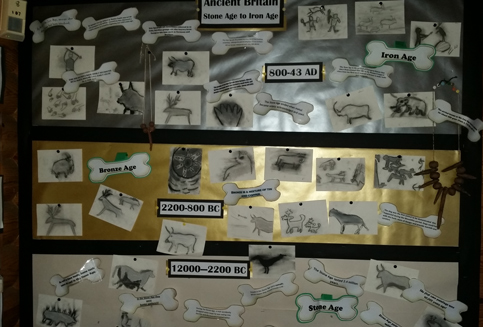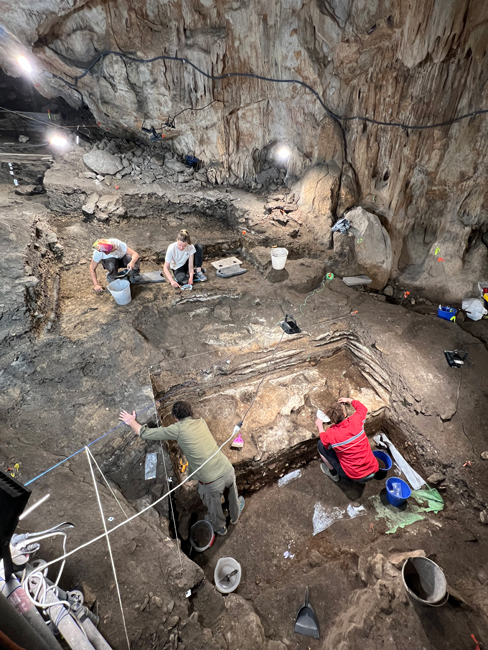New Research Challenges the Story of Humanity’s Shift from Hunter-Gatherers to Farming
New research published this week highlights the role of human interactions during the transition from hunter gathering to farming. The study, published in the Proceedings of the National Academy of Sciences (PNAS) challenges consensus. It has turned previous ideas on prehistoric societies on their head as it highlights the role of human interactions during the shift from hunting and gathering to farming – one of the biggest changes in human history – rather than earlier ideas that focused on environmental factors.
For the vast majority of our existence, Homo sapiens has adopted a hunter-gatherer foraging lifestyle. However, from about 12,000 years ago our species began to adopt a different lifestyle. Communities formed, settling in one location as farming began to take over. Scientists sometimes refer to this change as the “Agricultural Revolution”.

Views from Cova de les Cendres (Alacant, Spain). Early farmers arrived at this area through navigation. Picture credit: Oreto García-Puchol.
Picture credit: Oreto García-Puchol
The Palaeolithic and the Neolithic Transition
The “Stone Age”, the time when the most advanced tools used by humans were mainly made of stone, is divided into stages. For example, the earliest stage of this time in human history is referred to as the Palaeolithic. This denotes a period of time from the earliest known use of stone tools by hominins around 3.3 million years ago, down to roughly around 11,650 years ago. Palaeolithic means “Old Stone Age”.
The “Middle Stone Age” or Mesolithic followed, and this time period is associated with a decline in group hunting of megafauna in favour of a broader hunter-gatherer lifestyle. The Neolithic or “New Stone Age” marks the transition from a hunter-gatherer way of life to that of living in permanent settlements with a focus on farming.

Children learning about prehistoric societies. Schools in the UK have learning about the Stone Age and the transition to settled agriculture as part of their history curriculum. Picture credit: Everything Dinosaur.
Picture credit: Everything Dinosaur
Using a Mathematical Model to Plot Changes in Human Behaviour
The study involved a collaboration between researchers from the University of Bath, the Max Planck Institute for Evolutionary Anthropology in Germany, University College London and the University of Cambridge. The team developed a new mathematical model and framework that challenges the traditional view that this major transition was driven by external factors, such as climate warming, increased rainfall, or the development of fertile river valleys.
The research team conclude that modern humans were not just passive participants in this process. They played an active and vital role in the transition. Factors such as varying population growth rates and mortality rates driven by competition between hunter-gatherers and farmers, influenced the development of farming in these regions.
The mathematical model had originally been used to study predator-prey interactions. However, the researchers modified the framework permitting them to examine how early adopting farming communities and hunter-gatherers may have influenced each other. This study suggests that early farming societies spread through migration, competition, and cultural exchange, reshaping how hunter-gatherers lived and interacted with their environment.
A New Perspective on Prehistoric Societies
Commenting on the results, Dr Javier Rivas (Department of Economics at the University of Bath), stated
“Our study provides a new perspective on prehistoric societies. By statistically fitting our theoretical predator-prey model to observed population dynamics inferred from radiocarbon dates, we explored how population growth shaped history and uncovered interesting patterns, such as how the spread of farming, whether by land or sea, influenced interactions between different groups. More importantly, our model also highlights the role of migration and cultural mixing in the rise of farming.”

A field team excavating the floor of the Cova de les Cendres (Alacant, Spain), one of the sites included in the study. Picture credit: Oreto García-Puchol.
Picture credit: Oreto García-Puchol
The research team hope to develop this research by adding more factors into their model and evaluating it over larger regions and bigger datasets.
Dr Javier Rivas explained:
“We hope the methods we’ve developed will eventually become a standard tool for understanding how populations interacted in the past, offering fresh insight into other key moments in history, not just the shift to farming.”
The European Research Council funded this research.
Everything Dinosaur acknowledges the assistance of the University of Bath in the compilation of this article.
The award-winning Everything Dinosaur website: Prehistoric Animal Figures and Models.

